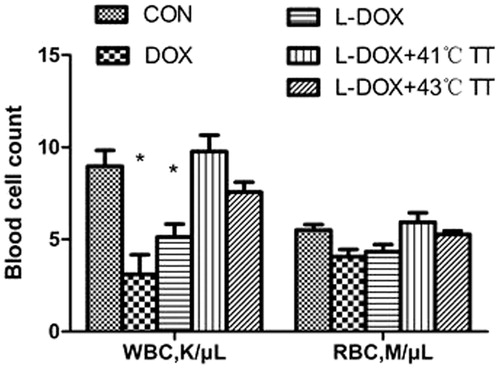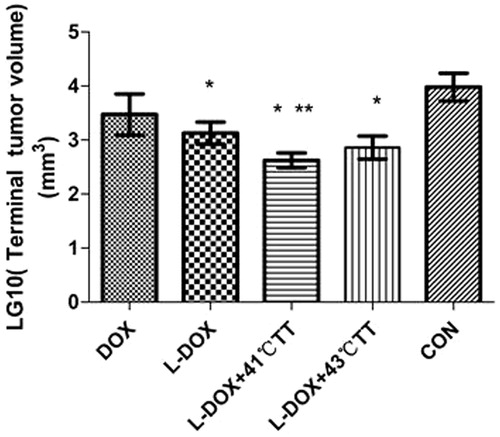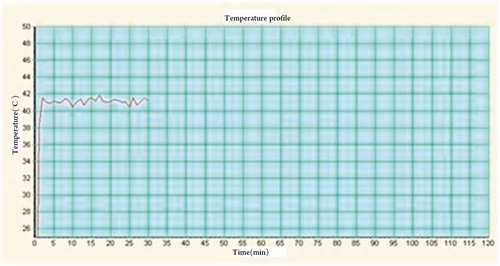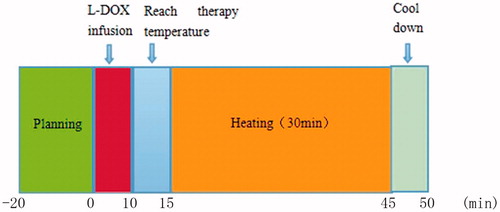Figures & data
Table 1. Changes in the weight ratio of VX2 tumor-bearing rabbits with the course of treatment. The rate of weight loss of four rabbits in the Dox group reached 20% within 7 days after three treatments (i.e. 31 days), four rabbits in the L-Dox group reached the end point of observation within 10 days (i.e. 34 days), all rabbits in the L-Dox + 43 °C group reached the end point of observation within 15 days (i.e. 37 days) and two rabbits in the L-Dox + 41 °C group reached the study end point of observation of 50 days.
Figure 3. Blood cell count in each group after treatment (n = 3; WBC: white blood cell; RBC: red blood cell). *Dox and L-Dox versus the control (CON) and L-Dox + 41 °C, p < 0.05.

Figure 4. Effect of L-Dox combined with local hyperthermia on the terminal tumour volume at the end of the study. One-way ANOVA was conducted after taking the logarithm then the Bonferroni method was used for pairwise comparison. *Dox versus L-Dox and L-Dox + 41 °C TT and L-Dox + 43 °C TT, **L-Dox versus L-Dox + 41 °C TT, p < 0.05.

Figure 5. Effect of L-Dox combined with local hyperthermia on tumour growth rate (n = 6). The tumour growth rate differed as the number of treatments increased. *Dox versus L-Dox, L-Dox + 41 °C TT and L-Dox + 43 °C TT; **L-Dox versus L-Dox + 41 °C TT; p < 0.05 (for the second and third treatment).



